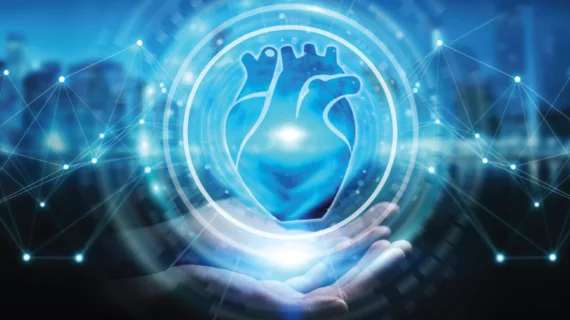AI gathers important LV volume data from cardiac MR images
Machine learning (ML) algorithms can evaluate cardiac MR (CMR) images and provide accurate measurements of left ventricular (LV) volumes from throughout the patient’s cardiac cycle, according to a new study published in Magnetic Resonance Imaging.
End-systolic and end-diastolic LV volumes are typically calculated during CMR examinations, the authors added, but that data is not monitored throughout the entire cardiac cycle. Goyal et al. hope advances in AI technology can change that practice going forward, improving care in other ways as well.
“To date, most cardiac parameters derived from CMR images are obtained using manual measurements, including chamber volumes that rely on tracing of endocardial boundaries,” wrote Neha Goyal, University of Chicago Medicine, and colleagues. “Automated identification of cardiac chambers followed by accurate measurements without time-consuming and experience-dependent user input would be a major development in clinical cardiac imaging.”
The researchers explored data from 21 patients undergoing clinical CMR examinations for a variety of reasons. While an AI algorithm provided LV time-volume curves from CMR cine images, an experienced reader manually calculated the same measurements. LV volumes and ejection/filling parameters determined by the algorithm and the experienced specialist were then compared.
Overall, the authors found that time-volume curves “were similar between the two techniques in magnitude and shape.” And as one might expect, collecting the necessary data was much more efficient using the AI technique. Generating the time-volume curves took approximately 2.5 minutes per patient using AI, but approximately 43 minutes when done manually.
“These findings indicate that incorporation of ML into daily practice of CMR analysis of LV size and function in the near future may be a realistic expectation,” the authors wrote.
Goyal’s team did note that it can be more challenging to successfully train AI algorithms when it comes to interpreting CMR images than some other kinds of imaging data.
“Unlike chest radiography or even computed tomography, which usually require interpretation of static images, CMR images are dynamic,” they wrote. “As a consequence, the incorporation of artificial intelligence and ML into CMR has been lagging behind. Nevertheless, the recent decade has witnessed significant efforts geared toward the realization of the potential of ML algorithms for analysis of CMR images.”

